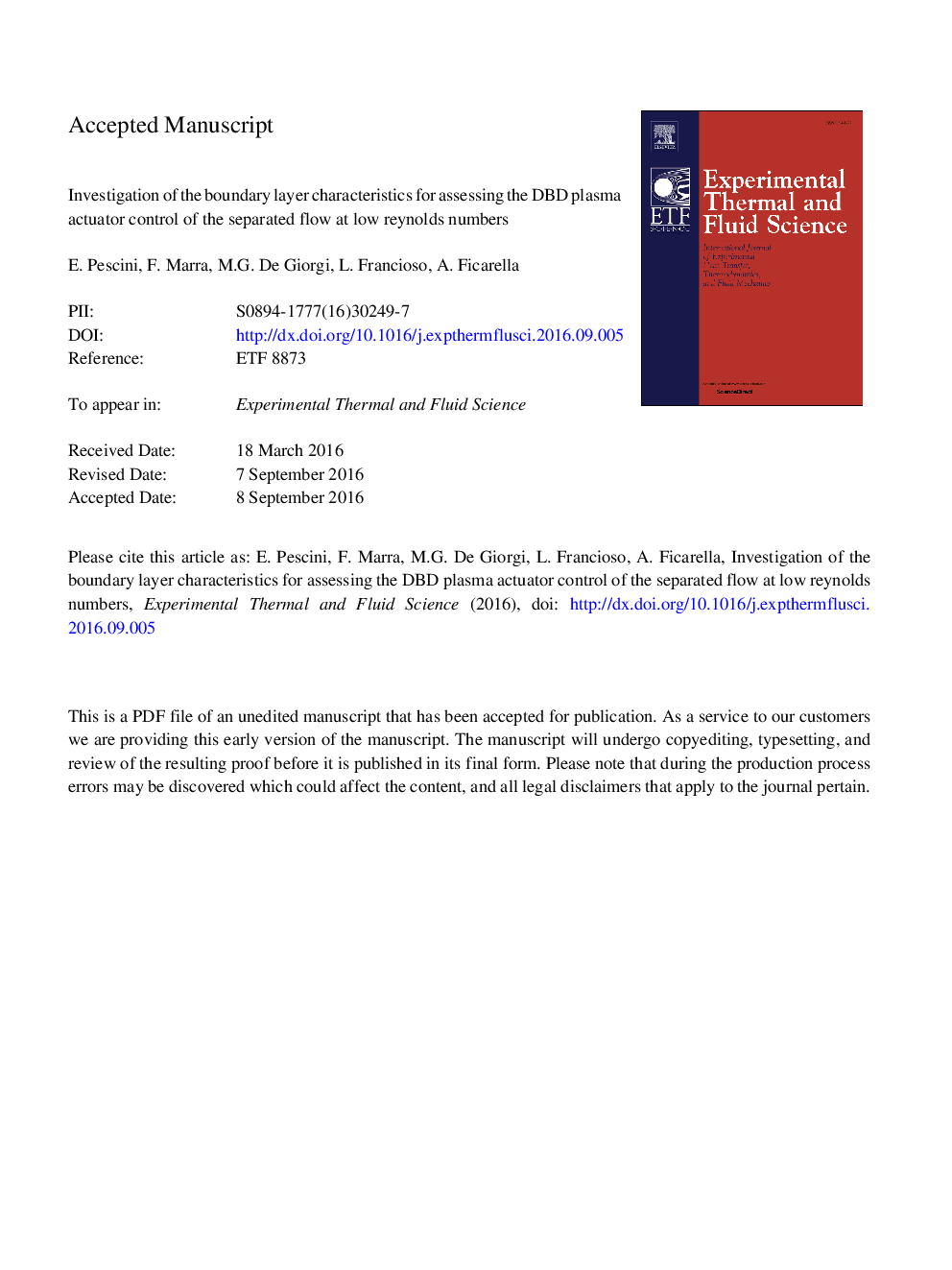| Article ID | Journal | Published Year | Pages | File Type |
|---|---|---|---|---|
| 4992549 | Experimental Thermal and Fluid Science | 2017 | 31 Pages |
Abstract
The effect of the active flow control was firstly estimated by analyzing the plasma induced velocity fields in absence of external flow. Subsequently the wind tunnel inlet free stream velocity (vx,âin) was set to 1.54 m/s. The velocity, turbulence intensity (Tu) and vorticity (Ïz) fields together with the boundary layer shape factor (H12) and momentum coefficient (cμ) were evaluated in both presence and absence of actuation. All the aforementioned analyses together with the estimation of the device electrical-to-fluidic energy conversion efficiency (ηfm) allowed identifying the best actuator geometry. Then, that configuration was chosen to investigate the effects of the wind tunnel velocity on the device control authority. The tested vx,âin values ranged from 1.54 m/s up to 3.16 m/s. In absence of actuation, a large reverse flow and high turbulence intensity was observed in the separation region. Considering the actuated cases, it was found that at Pâ¾el â 7 W, the SDBDPA operation always implied a reduction of the separated region, of the flow angle and of the turbulence intensity. Moreover, the plasma induced jet had a larger impact on the flow at lower velocities and a low flow control effect was noticed at the highest vx,âin values. The H12 factor evaluation confirmed the flow regimes at the different tested velocities (i.e. cμ values). The whole data set allowed to evaluate the actuator success for separation control and to identify a threshold value of the cμ coefficient delimiting the still detached flow from the reattached one.
Related Topics
Physical Sciences and Engineering
Chemical Engineering
Fluid Flow and Transfer Processes
Authors
E. Pescini, F. Marra, M.G. De Giorgi, L. Francioso, A. Ficarella,
